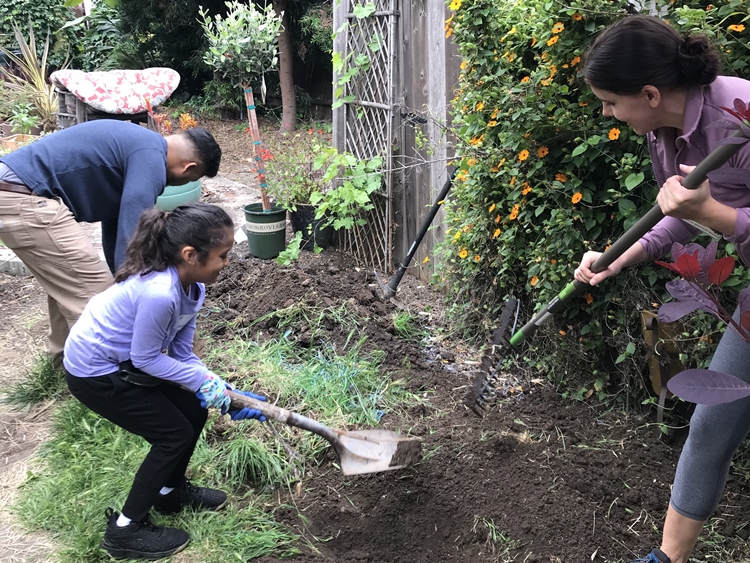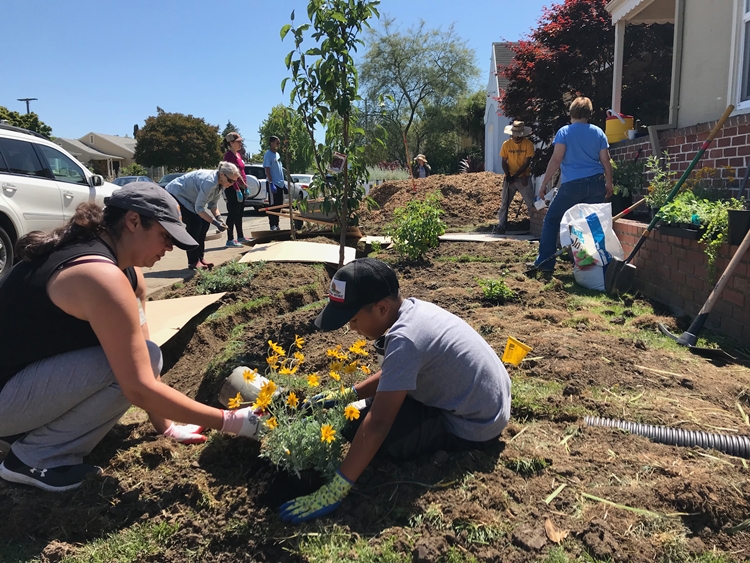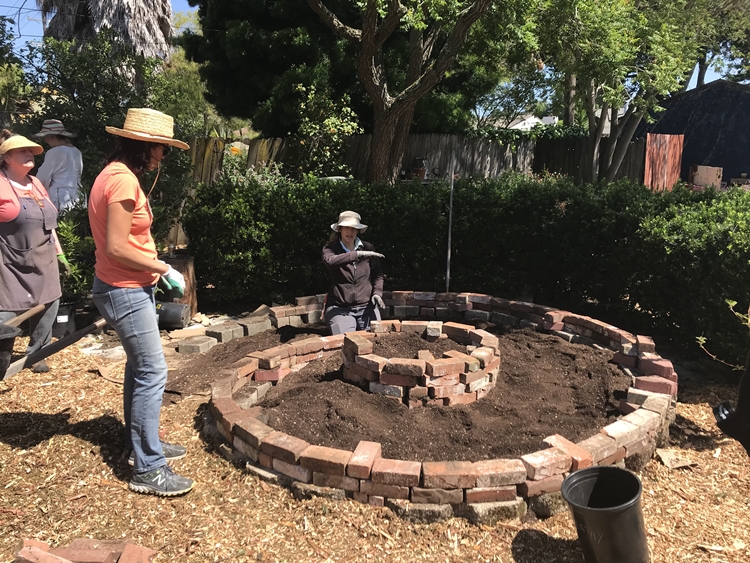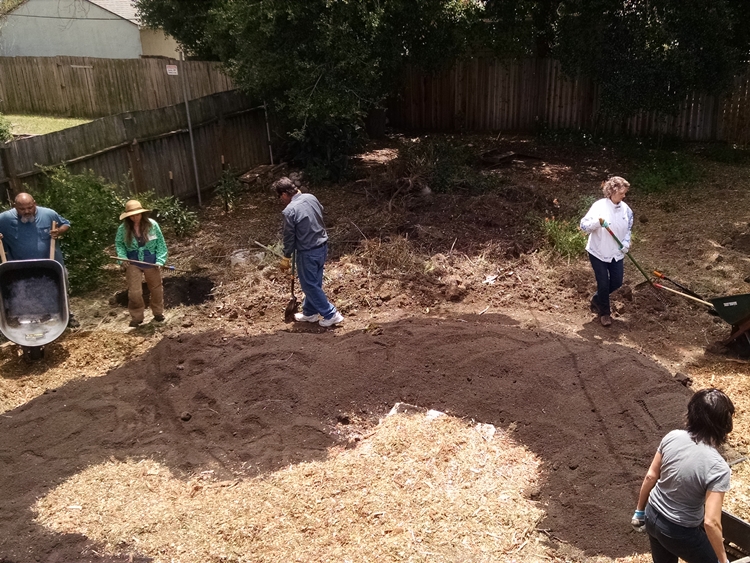Morningside Botanical Bounty
Vallejo Resilient Neighborhood




Neighbor Team: Carla, Diane, Joanna and Chris, Jessica and Dominic
“Good solutions solve many problems at once. We believe that participating in the Resilient Hubs program is a
path toward solving an enormous range of personal, economic, neighborhood, environmental, and societal problems.”
Design and Scope:
Permaculture designer Ojan Mobedshahi designed each home to address its unique features and challenges, while approaching the four sites as part of a single shared ecosystem. Our objective was to restore valuable functions back to the neighborhood like producing food and cycling water, with the largest priority placed on increasing shade cover to help regulate temperature and mitigate extreme heat events.
Shade: Seven shade trees were selected and placed at the participating homes to help regulate temperature.
Water: Two laundry-to-landscape greywater systems were installed, while every home incorporated roofwater diversion into swales to reduce runoff and help recharge groundwater. Each home included sheet mulching to conserve water, and one replaced the full front lawn with a water-wise, edible landscape.
Sustainable Landscaping and Food Production: The homes incorporated 19 fruit trees along with an assortment of edible perennials, herbs and pollinator plants. The varieties of plants were strategically chosen to provide diversity across the homes and produce a varied crop of food to be shared between the neighbors. An herb spiral and two hugelkultures were included to accommodate individual homeowners’ unique interests while demonstrating useful sustainable landscaping techniques.
Efficiency: We partnered with Rising Sun Center for Opportunity through their Green House Calls program to provide energy audits and upgrades to each of the participating homes.
Plant Varieties:
Below are some of the plant varieties used across the four homes in Morningside Botanical Bounty to create robust and vibrant water-wise landscapes.
Chitalpa, Western Redbud, Coast Live Oak, Crepe Myrtle, Sweet Bay, Pacific Wax Myrtle, Desert Willow
Lemon, Apple, Apricot, Plum, Pineapple Guava, Pluot, Fig, Peach, Mandarin, Elderberry, Loquat, Avocado, Mulberry
Installation:
The installation of these four homes took place over a series of six Saturday workshops from May 25 – June 30, 2019. Each weekend brought a diverse mix of family, friends, surrounding neighbors and community members. The enormous amount of work accomplished by these dedicated individuals in such a short amount of time is truly astounding. It was a joy to watch the connections and bonds being formed between the team throughout this process. To see their support and investment in each other manifested in something so vibrant and tangible was a powerful experience, and we look forward to watching it mature along with their new gardens.
As with any project of this size, it was not without its challenges – from seemingly endless mountains of mulch to a spring heat wave that brought brutal 90-degree days, underscoring the importance and urgency of increasing shade in the neighborhood. Also, as this was the first installation of its kind for our organization, a lot of on-the-spot adaptations had to be made. The team generously worked with us through every obstacle as we came together to bring this new program life: problem-solving, adapting and doing it all with a smile — a true embodiment of resilience.
Hopes for the Future:
Our collaboration with the Morningside Botanical Bounty team has given us great hope for the future of Resilient Neighborhoods. They have beautifully demonstrated the power of people and embody our vision of an engaged community. As the team wrote at the start of this process, “It is our hope that this hub can help start a movement. Over the long term, we have bigger goals: to fill the city with green, bring environmental education to the schools, and help catalyze a sustainable local food economy.”
“We hope to work with the greater community in a number of ways, including (but not limited to): opening our houses and gardens for tours; hosting workshops and work parties; serving as a distribution/communications hub for resources in case of emergency; and advocating for environmentally sustainable policies with community groups and local government.”
